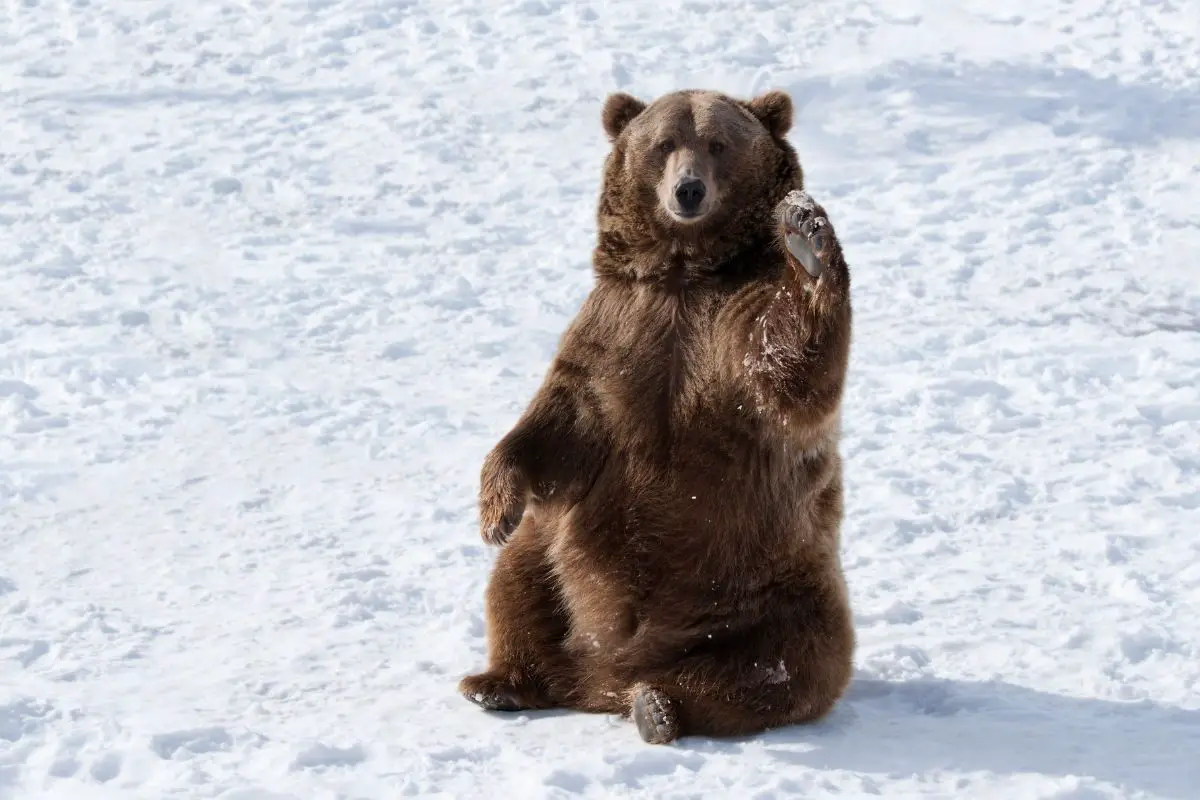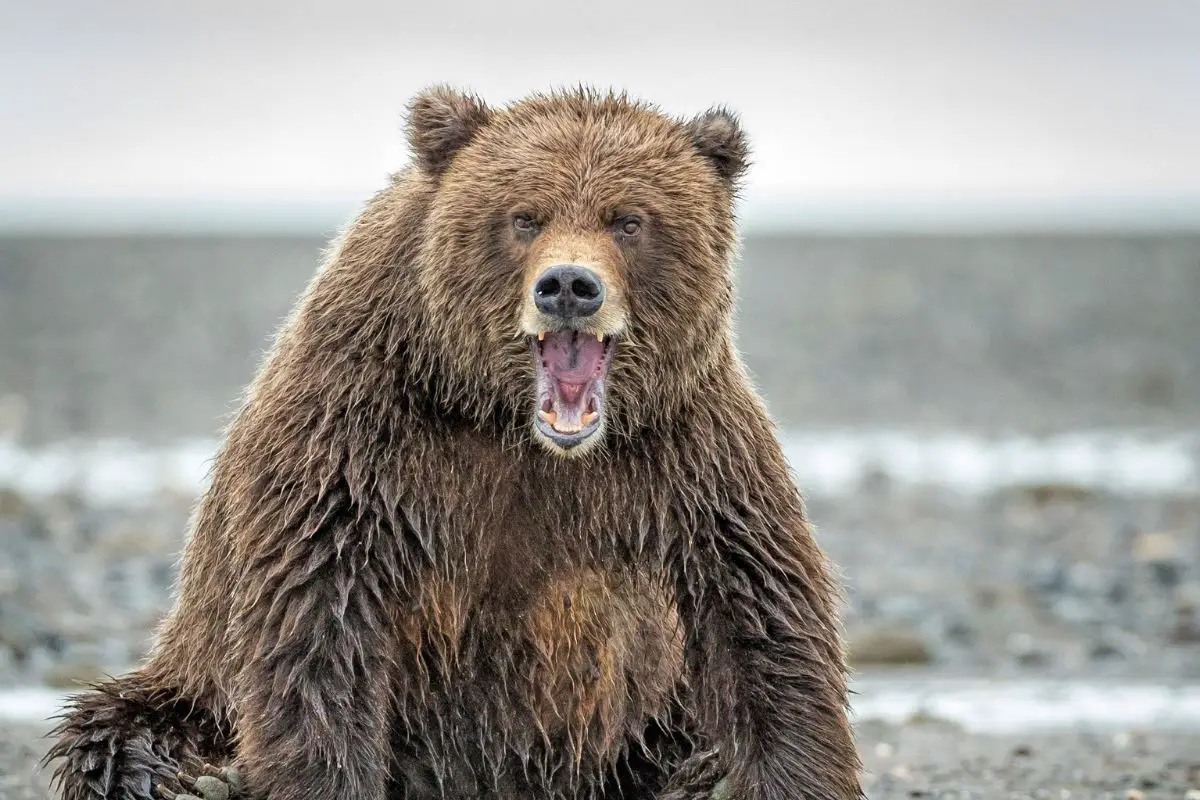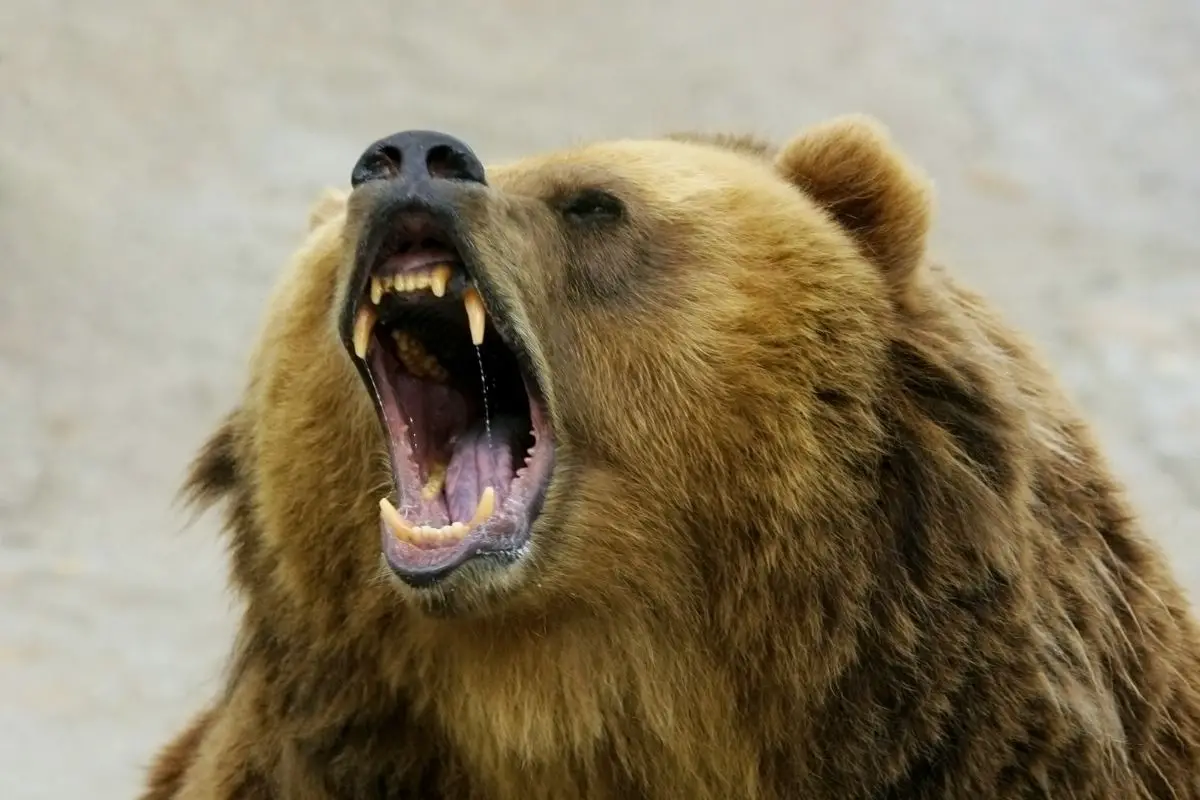
Let’s say you’re out for a walk in the woods, and you come across a bear. The bear waves at you, and you’re not sure what to do. Here are some reasons why a bear might be waving at you:
1. The bear may be trying to scare you off.
2. The bear may be begging for food.
3. The bear may be trying to intimidate you.
If the bear looks angry or aggressive, it’s best to stay away and not make any sudden movements. However, if you’re unsure of the bear’s state, it’s always best to err on the side of caution and slowly back away from the bear. If the bear continues to approach you, make yourself as big as possible and make loud noises in an attempt to scare it off.
You can also try throwing rocks or sticks in its direction. If all else fails, use pepper spray or a bear horn to defend yourself.
Let’s dive deeper into some of the reasons a bear might wave at you.
Reason #1: Warning
When you see a bear waving its arms at you, it’s not trying to be friendly. In fact, the bear is trying to warn you that it is dangerous and you should stay away. Bears will usually wave their arms if they are feeling threatened or if they are about to attack.
What to do in response to a bear’s warning
If a bear is waving at you from a distance, you should stay calm and slowly back away and find a safe place to hide. If the bear starts to come closer, you should make yourself look as big as possible by waving your arms in the air and making noise. You can raise your pack in the air, stand on something, or link your arms with another person and stretch out.
Reason #2: Begging for Food
Bears are incredibly intelligent animals that have learned how to mimic human behavior in order to get food. This is the primary reason bears wander into campsites or approach hikers.
Bears are generally afraid of humans, which means that if a bear waves and approaches, it is desperate. A desperate animal is just as dangerous as a desperate human. If the bear approaches you, there is a very high chance that it will attack.
What to do in response to a bear’s begging for food

According to Woodsman Report, the best thing to do when a bear approaches looking for food is to slowly back away and make sure the bear has an escape route. You should never feed a bear, no matter how cute or begging it may be. Once a bear gets a taste for human food, it will continue to beg and may even become aggressive.
If you have food, keep it out of the bear’s reach and make sure it cannot smell it. If you do not have food, slowly back away. Do not make any sudden movements or noises as this may startle the bear.
Reason #3: Intimidation
Another reason a bear may wave at you is to intimidate you if it is wounded or has its cubs with it. When hiking, you may accidentally wander into a bear’s backyard. Bears are extremely protective of their territories and their offspring. If you see a bear waving its arms or huffing and puffing, it is trying to scare you off. Move away quickly and quietly to avoid a confrontation.
What to do in response to a bear’s intimidation
If you see a bear waving its arms and looking aggressive, it is best to slowly back away in the direction you came from. Try to avoid making direct eye contact and remain calm. Do not scream or make sudden movements, as this may trigger an attack.
If the bear does attack, fight back with whatever you have on hand and try to focus blows on its face and muzzle.
How to Tell When a Bear is Threatening You
There are several signs that a bear may give when it intends to attack you. These include:
- Making loud noises, such as growling, huffing, or puffing
- Flattening its ears against its head Lowering its head
- Swatting at the ground
- Stamping its feet
- Laying its ears back
If a bear raises its hackles (the hair on its back), stomps its feet, huffs or snorts, or slaps the ground with its paw, it is telling you to back off.
If a bear charges at you, stands on its hind legs, or rocks back and forth on its front paws, it is probably about to attack. If you see any of these behaviors, back away slowly while facing the bear. Do not turn your back on the bear or run away, as this may trigger an attack.
What to do if a Bear Attacks

If a bear does attack, Western Wildlife recommends that you fight back with whatever you have on hand and try to focus blows on its face and muzzle. Use pepper spray if you have it, and try to escape to safety as quickly as possible. Do not play dead! This will only work if the bear is attacking in defense of its cubs.
If the bear continues to attack, use whatever you can as a weapon, including rocks, sticks, or even your fists.
Conclusion
Bears are incredibly intelligent animals that can be dangerous if approached in the wrong way. When a bear waves at you, under no circumstances should you think the bear is saying hello. There are three main reasons why a bear may wave at you: begging for food, intimidation, or threat.
Whenever a bear waves at you or approaches you, the best course of action is to vacate the area. Do not make any sudden movements, do not run away, and do not turn your back on the bear. Like any wild animal, be careful not to be provocative unless the animal is clearly approaching you.
If a bear does attack, fight back with whatever you have on hand and try to focus blows on its face and muzzle.
Remember: a waving bear is not a friendly bear! Contact us for more information on how to stay safe when confronted with a bear.
Sources:

